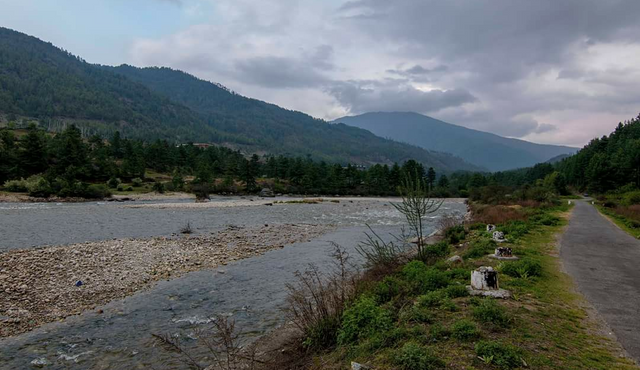
Bumthang is one amongst the 20 districts in Bhutan and is a gorgeous valley situated at the far end of Bhutan which stretches from 2600 to 4500m.This religious heartland is also home to some of the oldest Buddhist temples and monasteries. Stories and tales of Guru Padmasambhava and other religious treasure discoverers still persist here.
Bumthang Dzongkhag consists of four main valleys Ura, Chumey, Tang and Choekhor, out of which Choekhor is the largest and is widely considered as ‘Bumthang Valley’. Bumthang has 2 probable meanings, the first one being "beautiful field" wherein Thang means field or flat place, and bum is used an abbreviation for bumpaa which means "a vessel for holy water", thus describing the shape and nature of the valley. The other meaning of Bumthang is the “Valley of Beautiful Girls” wherein Bum means "A beautiful girl"
Jakar is the district headquarter of Bumthang (Cheokhar)and is a beautiful town nestled between green mountains and stunning Chamkar Chu river. This town is the site of Chakhar Lhakhang, a small temple which marks the site of the "Iron Palace" of Sindhu Raja, the Indian monarch who is believed to have first invited Guru Rinpoche to Bhutan in 746. According to a myth, in 1549 , a roosting white bird signaled the location of a monastery which later got named as Jakar, meaning "white bird."
Places to Visit
• Membar Tsho (Burning Lake), is a place where sacred scriptures were hidden by Padmasambhava in the 8th century and were later recovered by Pema Lingpa in the 15th century.
• Kurjey Lhakhang, final resting place of the remains of the first three Kings of Bhutan.
• Jakar Dzong, overlooking the main town of Jakar.
• Jambay Lhakhang, one of the two most ancient temples of Bhutan, built in the 7th century by Songtsän Gampo, founder of the Tibetan Empire.
• Tamzhing Monastery is the most important Nyingma institution in the country.
• Padtshaling Gonpa- This monastery was established by the first Padtshaling Tulku Siddha Namgyal Lhendub in 1769.